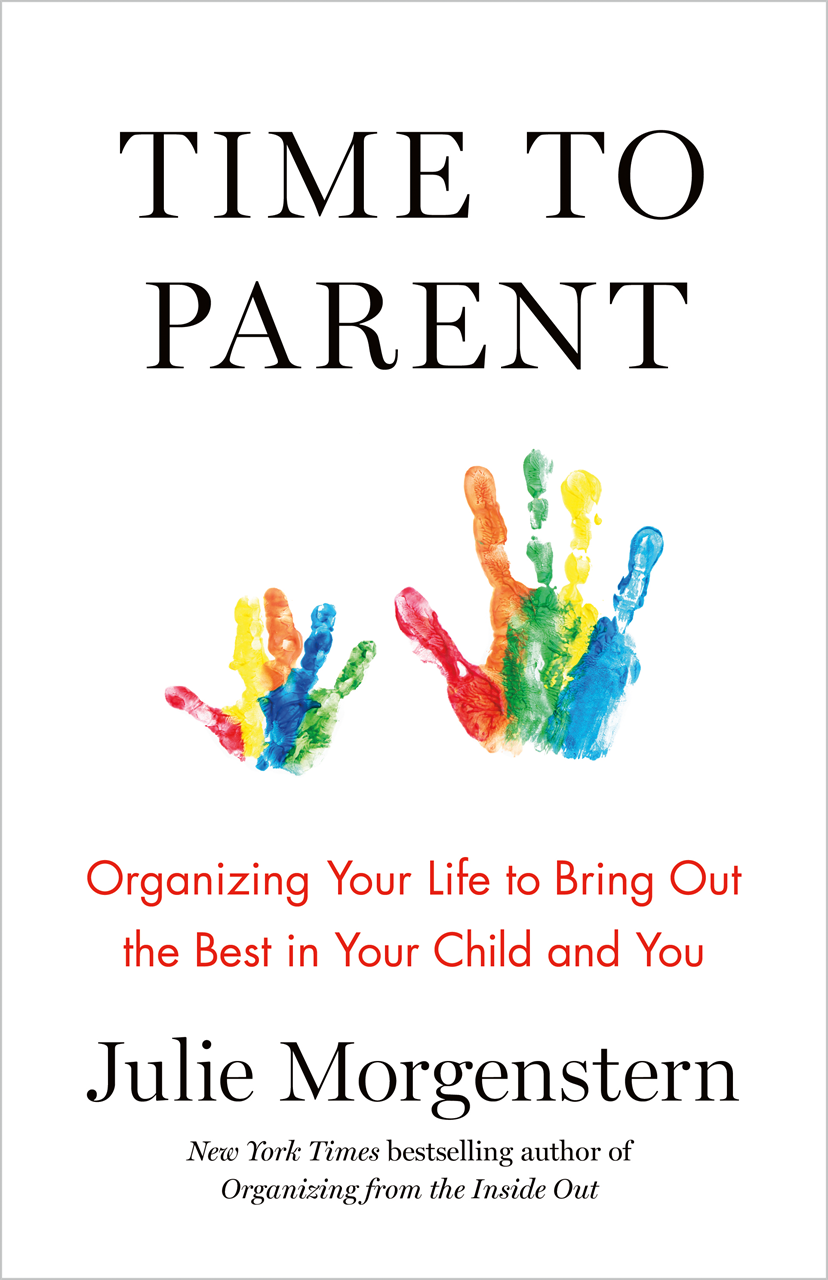Announcing the Washington DC Book Launch for Julie Morgenstern’s upcoming book, Time to Parent: Organizing Your Life to Bring Out the Best in Your Child and You. Join fellow “Inside Out” fans to hear Julie discuss the most challenging time management issue in the age of technology, keeping your family organized so you can enjoy time with your loved ones.

.

"I have a big history of book events in DC, which has included speaking at the National Book Festival with the launch of my last book SHED Your Stuff, Change Your Life. It was a huge turnout, and it made me feel very connected to readers in Washington DC. This time around, having the chance to speak with families and to help them better organize their lives so that they can have quality time with their kids and for themselves is something I am very much looking forward to sharing."
Register for the first-ever public event sponsored by the Washington DC chapter of the National Association of Productivity & Organizing Professionals (NAPO). Both the public and productivity professionals are invited to attend the official book launch and presentation of Julie Morgenstern’s new book Time to Parent. All book launch attendees will receive a copy of Julie’s new book and the opportunity to take part in a book signing reception.
“Julie is an amazing motivational speaker! I admire her ability to present in large group settings, alongside celebrities and in front of the camera. This book launch will not just be her reading a paragraph from her book, but she will inspire us to be the best parents we can be.”
- Heather Cocozza, NAPO Washington DC Metro Chapter President
The Book Launch begins with a presentation by Julie Morgenstern, focusing on her latest time management and productivity lessons. Ask Julie your burning productivity questions in a question and answer (Q&A) period. Afterward, meet Julie and get your copy of her new book signed, then mix and mingle with Professional Organizers and Productivity Experts at the book signing reception.
The Book Launch Schedule of Events
3:15 pm - 3:45 pm Registration
3:45 pm - 5:15 pm Time to Parent Book Launch Keynote with Julie Morgenstern
5:15 pm - 6:30 pm Book Signing and Reception (light refreshments and a cash bar will be available.)
This event is only $39 and open to the public, as well as Organizing and Productivity Professionals. Register here. https://www.dcorganizers.org/Julie-Morgenstern-Book-Launch
The event will be held in beautiful Founder’s Hall on the campus of George Mason University in Arlington, Virginia, with easy access to Metro and affordable parking at the event location. Make a day of it by visiting one of the wonderful restaurants and/or stay at a hotel close by.
Are you a Professional Organizer or Productivity Specialist looking for more education? Register for the Successful Productivity Professionals event that will happen on the same day and will include the Book Launch for Time to Parent. Register for Successful Productivity Professionals here, https://www.dcorganizers.org/Successful-Productivity-Professionals/
Please contact productivity@dcorganizers.org with questions or for more information.